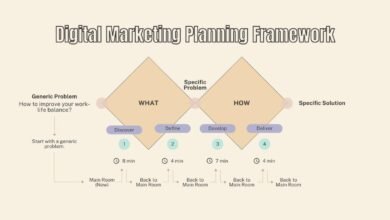Content Marketing for Financial Services: How to Navigate

Content marketing for financial services become a powerful tool in the financial services industry. As people seek greater financial literacy, investment education. And effective wealth management strategies, providing valuable content can significantly boost client engagement. For financial advisors, wealth managers, and financial planners, the right content marketing approach can establish authority. Foster trust, and enhance client relationships. This article explores essential content marketing tactics tailored to the financial services sector. Helping your business grow by creating value for your audience.
Understanding Content Marketing in Financial Services
Content marketing in financial services involves creating and sharing informative, relevant. And consistent content aimed at addressing the financial needs and concerns of clients. Unlike traditional advertising, content marketing seeks to educate and engage clients. Equipping them with the knowledge to make informed financial decisions. By producing high-quality content, financial service providers can strengthen their brand’s credibility, gain client loyalty, and even generate new leads.
Key Benefits of Content Marketing in Financial Services
With increasing competition, financial institutions must leverage content marketing to stand out. Below are some of the key benefits of adopting a robust content marketing strategy:
Building Financial Literacy
Creating content focused on financial literacy is a vital aspect of any financial marketing strategy. Financial literacy content, such as articles, videos. And infographics, helps individuals understand basic and advanced financial concepts, from budgeting and saving to investing and retirement planning. By offering accessible resources. Financial services companies can empower their audience to make sound financial decisions, fostering a sense of trust and authority.
Enhancing Investment Education Resources
The complexities of investment can be daunting for many clients, especially those new to wealth management. Content that simplifies investment concepts and offers guidance on different types of investment vehicles—such as stocks, bonds, mutual funds, and ETFs—can be invaluable. Providing investment education resources helps clients understand the importance of diversifying their portfolios, managing risks, and planning for long-term growth. When clients feel well-informed, they are more likely to stay engaged with your services and trust your advice.
Promoting Wealth Management Strategies
In the realm of financial services, wealth management strategies are a significant concern for clients. Who want to preserve and grow their wealth. Content that delves into asset allocation, risk management, tax optimization, and estate planning can provide substantial value. By sharing expert insights and proven strategies, you demonstrate your expertise in wealth management. Making clients feel confident that you have their best interests at heart.
Offering Financial Planning Tips

Financial planning is a core component of any successful financial strategy. Clients are often looking for practical, actionable tips to help them manage their finances effectively. Content that provides financial planning tips, such as setting financial goals, preparing for retirement, and managing debt, can resonate strongly with your audience. Through well-crafted content, you can guide clients on how to structure their financial plans in alignment with their unique goals and timelines, enhancing their experience and satisfaction.
Improving Client Engagement through Targeted Content
Client engagement tactics in content marketing focus on creating a two-way communication channel between your brand and the client. By leveraging client engagement tactics—such as interactive webinars, Q&A sessions, and personalized newsletters—you can foster stronger relationships and drive deeper engagement. Providing tailored content based on client feedback and inquiries shows that you are listening to their needs, which can increase client satisfaction and loyalty.
Strategies for Effective Content Marketing in Financial Services
Creating high-quality, SEO-friendly content is essential to making your content marketing efforts successful. Here are some practical strategies to implement:
Identify Your Target Audience
Knowing your target audience is crucial in content marketing. Financial services clients can range from young professionals seeking investment education to retirees focused on wealth preservation. Segmenting your audience based on factors such as age, income level, and financial goals allows you to create content that resonates with each group. For example, younger audiences may prefer digital financial literacy content that is quick and easy to consume, while older audiences may appreciate more in-depth guides on retirement planning.
Leverage SEO for Greater Reach
Search engine optimization (SEO) is essential to improve the visibility of your content. Use relevant keywords like “investment education resources,” “wealth management strategies,” and “financial planning tips” to ensure your content reaches those searching for related topics. SEO also involves optimizing titles, meta descriptions, and image tags to help your content rank higher on search engines. The better optimized your content, the easier it is for potential clients to discover your expertise.
Offer Valuable Resources for Financial Literacy
To build trust, offer resources that educate clients on essential financial topics. This could be in the form of blog posts, videos, or downloadable guides. Topics like budgeting basics, the power of compound interest, or how to start investing can lay the foundation for deeper financial understanding. Financial literacy resources empower clients, demonstrating that your firm values their knowledge and independence.
Use Engaging Formats to Explain Investment Concepts
Investments can be complex, and simplifying these concepts through engaging formats is key. Consider creating infographics, videos, or webinars to explain different types of investments, market trends, and risk management strategies. For example, a video series on “Investment Education Basics” could explain stock market fundamentals, the role of bonds, or the importance of portfolio diversification. When clients have access to easy-to-understand investment education resources, they feel more prepared and comfortable making decisions.
Provide Interactive Financial Planning Tools
Interactive tools, such as retirement calculators, budgeting worksheets, or financial health check quizzes, are highly effective in the financial services sector. These tools encourage clients to take an active role in their financial planning. For example, a “Retirement Readiness Calculator” could help clients estimate their retirement savings needs, while a “Monthly Budget Planner” assists in tracking expenses. Such tools make financial planning feel approachable and help clients gain valuable insights into their own financial situations.
Regularly Share Wealth Management Insights
Wealth management is an ongoing process, and clients value consistent updates on market trends, economic factors, and new investment opportunities. Consider a monthly newsletter or blog series on wealth management strategies that addresses current issues in the financial world, such as inflation, interest rates, or tax policy changes. This type of content not only keeps clients informed but also reinforces your role as a knowledgeable and reliable partner.
Host Webinars for Client Engagement

Client engagement tactics like live webinars or Q&A sessions provide an excellent platform for clients to ask questions and engage directly with financial experts. These sessions allow you to address client concerns, discuss recent financial news, and offer insights on specific topics, such as retirement planning or tax-saving strategies. Interactive content like this fosters a strong relationship between your firm and clients, building loyalty and trust over time.
Estimating the Progress of Your Substance Showcasing Endeavors
To evaluate the effectiveness of your content marketing strategy, track key performance indicators (KPIs) such as website traffic, content engagement (likes, shares, and comments), lead generation, and client feedback. Tools like Google Analytics can provide valuable insights into which topics resonate most with your audience. Additionally, pay attention to client engagement metrics in newsletters and webinars to understand which content formats and topics drive the most interaction.
Consistent analysis of your content’s performance enables you to refine your strategy, focus on what works, and explore new areas that meet your clients’ evolving needs.
Conclusion
Content marketing in financial services is not just about generating leads; it’s about building long-term relationships by providing valuable knowledge and guidance. By focusing on financial literacy content, investment education resources, wealth management strategies, and financial planning tips, your firm can build trust, enhance client engagement, and ultimately strengthen its brand.




